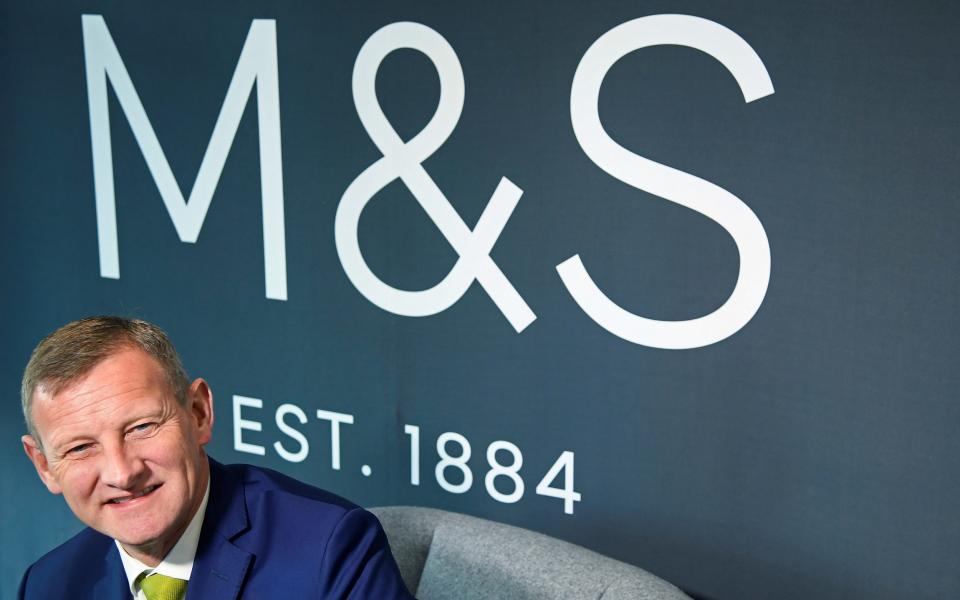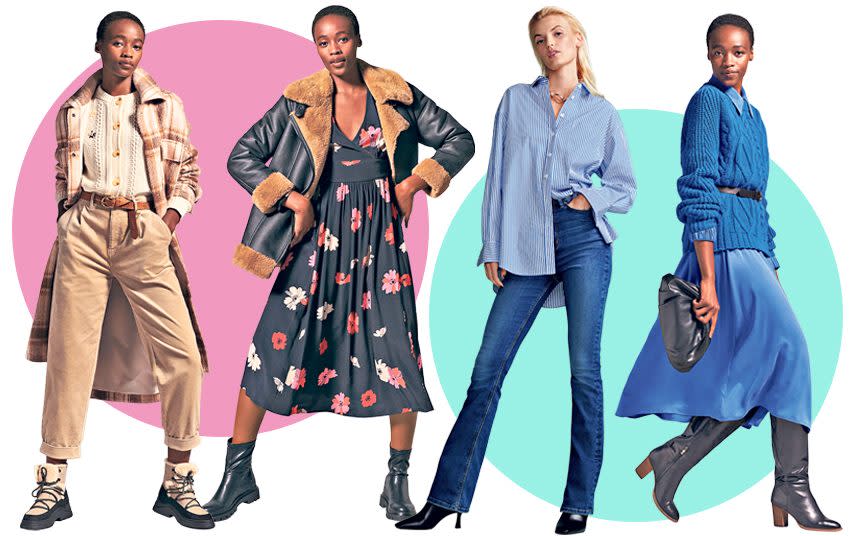Marks & Spencer battles to prove it’s still a great British institution

A former Marks & Spencer worker asked chairman Archie Norman a seemingly harmless question ahead of its results on Wednesday that captured a nagging doubt about the retailer. “The trouble with M&S is - it’s a great British institution, but is it a business?”
Norman replied: “Our project is about turning a great institution into a great business.”
The former ITV chairman was aware, he said, of “doubters and cynics along the way” who have questioned M&S’s most recent reinvention plans, following several failed attempts over the years.
“Probably I would have been one [doubter] too,” admitted Norman. “I hope you will see from these results that we are very serious about the reshaping of the business.”
The 137-year-old British retailer expects to make profits of £500m this year after sinking to its first annual loss in 94 years in 2020.
Behind it all is chief executive Steve Rowe, appointed in April 2016, who has been spearheading a turnaround since 2017.

For the first time in a long time, M&S is arguably on the right track to get its spark back - it has made tangible progress in its clothing and home division, a typical thorn in the side of the retailer, as well as its food arm which has become an upscale own-brand grocer.
“Those that have observed M&S for a while may ask straightaway if this is another false dawn,” says Jonathan Pritchard, a retail analyst at Peel Hunt.
“We do not think so. The strategic progress is noteworthy, with fewer lines and greater depth in clothing, and much-improved value for money offer in food, and more customers via Ocado.”
M&S’ latest resurrection of its clothing and home business - historically a drag on the better-performing food arm, as with John Lewis and Waitrose - appears to have actually worked.
So what has changed? Nailing the basics, selling more third party brands online and in-stores, and focusing on key areas such as activewear and kids clothing.
M&S is banking on “100 timeless essentials” to revive its womenswear department. These products would always be affordable, and always in stock, a strategy known in the industry as “NOOS”: never out of stock/never on sale.
Shoppers can expect at least 30pc of these products to be in stock, which includes skinny jeans and cashmere-like Cashmilon jumpers - 1.5m of which are sold each year.

M&S has also weaned itself off the addictive practice of discounting clothes and has taken to selling them at full-price instead. The break from promotions, however, has been an unexpected tailwind from the pandemic. Due to global supply chain issues, M&S had fewer clothes, and very little excess stock to discount.
A shrunken inventory due to supply chain woes, especially in womenswear, has resulted in orders being placed closer to the date of sales and speeding up the supply chain.
To show he means business, Rowe even sent 1,300 staff to a “training academy” last year to learn how to buy better products. It follows episodes like “jeansgate” in 2019 when buyers failed to order enough stock for a collection promoted by TV presenter Holly Willoughby.
The FTSE 250 business has also started selling more third-party, sought-after brands such as Ghost and Nobody’s Child alongside its in-house designs to retain customers who might be tempted to shop elsewhere and help attract a younger audience.
Next has implemented a similar strategy, now selling hundreds of third-party brands online which account for a chunky slice of sales. The chain is the only British brand that sells more clothes online than M&S.
During the first half, M&S said casualwear remained far more popular than formal clothing as many customers continued to work from home. At the same time, sales of holiday clothes such as swimming suits tumbled as families avoided going abroad due to travel restrictions.
Customers also bought more of their clothing staples online, with sales of lingerie and essentials up 97pc compared to two years ago.
But demand for smarter outfits such as suits began to return in September, as white collar workers increasingly started commuting to the office again. It helped lift sales of suits by 3pc compared to 2019-20. Trouser sales grew as well, by 8.7pc for the month.
While other high street rivals such as Debanhams and Arcadia failed to survive the pandemic, Rowe admitted their collapses have aided M&S’ uplift in fashion and homeware: “It would be naive to say we’re not having an advantage from it”.
Now, the retailer plans to open 20 new stores in the next three financial years, including six former Debenhams sites.
Just as its clothing sector comes into its own, so has its food division.
While the residual effects of the pandemic still cloud the extent of improvements, having inflated grocery sales, M&S noted a string of long-term measures that have boosted its food arm.
The average basket size on everyday shopping trips remains almost a third higher than before the pre-pandemic levels, even as restrictions eased and Britons returned to restaurants.
It has reduced choice in core product categories including pasta, ready meals, bakery and wine, and started selling more frozen food.
Simplifying ranges has attracted new customers, it says, increasing market share in key categories such as vegetables (from 5.6pc to 6.3pc of the total grocery market on a two-year basis); meat (6.6pc to 7.3pc); and groceries (1.5pc to 1.9pc).
It has also ditched promotions on food and started offering cheaper everyday items via its "Remarksable" range, mirroring similar behaviour at larger rivals Sainsbury’s and Tesco as cost-conscious shoppers increasingly hunt for bargains.
A 500g pack of 12pc fat British beef mince costs £2.60, while its Select Farm equivalent is £4.50; its 800g soft white farmhouse bread loaf is £1.25, compared with its super-soft bread loaf at 65p.
Much of this growth happened in its out-of-town shops as Covid-weary customers continued to favour them over city centre locations. Sales in retail parks were up 23.3pc compared to two years ago, while those in city centres dropped 18.4pc. High street sales also dipped, while franchise travel stores - in airports and railway stations - plunged by almost 50pc.
Going forward, the company plans to favour neighbourhood sites and retail parks, with good access and parking.
“We’re moving out of town centres into brand new premises that are the right size in a modern environment,” Rowe said. “The future of our estate is omni-channel.”
M&S has argued that “on-the-move” food sales had improved since the return of schools and office workers this autumn, with sales in city centres and travel stores rising as a result.
The key plank in M&S’s food rebound, however, is its timely tie-up with online grocer Ocado, which went live with vans covered in percy pigs eight months into the pandemic - just as punters were stuck at home. Until then, its online offering was practically non-existent.
Rowe says online orders are profitable and he is “very pleased with the growth opportunities Ocado has presented”.
Concerns in the City that M&S had overpaid for its 50pc stake in Ocado Retail in 2019, at £750m, have been proved wrong by early results.
The joint venture contributed a net income of £28m during the half year, with M&S products sales on Ocado raking in £309m, or 27pc of total sales. There are plans to open three more robotic warehouses, expected to boost M&S online food sales even further.
Mr Rowe added that the revamp of its food halls, simplifying the way shops are stocked, means more money is made and there is less waste per site.
“The food business remains the standout performer,” says Steve Dresser, director at Grocery Insight.
It seems Rowe’s patience has succeeded in pulling off not just a transformation, but an M&S transformation.
As the 54-year-old put it: “We feel we’re past an inflection point, we’ve moved into the next phase of the transformation, shaping the M&S of the future.”
Additional reporting by Tamara Abraham

 Yahoo Finance
Yahoo Finance 